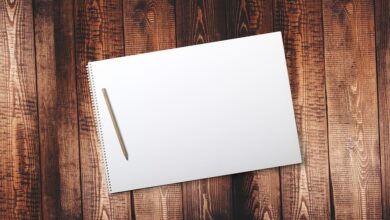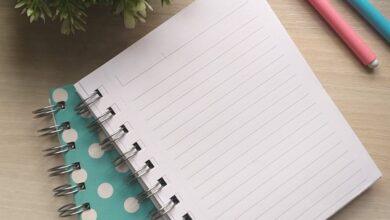
Simplify Your Life with the Help of a Planner
In our fast-paced world, where distractions abound and responsibilities seem to multiply, simplicity can feel like a distant dream. Many of us juggle various commitments, from work-related tasks to personal engagements, often leading to stress and overwhelm. However, there is a straightforward solution that can transform chaos into order: a planner. The humble planner, whether digital or traditional, serves as a powerful tool for enhancing organisation, improving productivity, and ultimately simplifying life.
Understanding the Role of a Planner
At its core, a planner functions as an organisational assistant. It provides a structured space to capture thoughts, tasks, appointments, and deadlines. However, the benefits of using a planner extend far beyond mere organisation. By committing to a planner, individuals can experience increased mindfulness, reduced anxiety, and a clearer path to achieving their goals.
The Psychological Benefits
Using a planner can significantly reduce stress and anxiety. The act of writing things down allows the mind to release burdens. When tasks remain floating in our heads, they can become sources of worry. Conversely, transferring these tasks to a planner not only clears mental space but also offers a visual representation of what needs to be done. This visual cue enables users to approach their responsibilities with a sense of control and focus.
Moreover, the simple act of checking off completed tasks can trigger feelings of accomplishment and motivation. This positive reinforcement encourages further productivity, creating a rewarding cycle that bolsters self-discipline and focus.
Choosing the Right Planner
Before reaping the benefits of a planner, selecting the right one is paramount. Planners come in various formats, such as daily, weekly, or monthly, and can embrace digital or physical forms. Here are several factors to consider when choosing a planner:
Purpose
Define what you aim to achieve by using a planner. Are you primarily focused on time management, task completion, or long-term goals? Understanding your needs will aid in selecting the right planner. For example, a bullet journal might suit someone who enjoys creativity and customisation, whereas a traditional dated planner serves those who appreciate structure and routine.
Size and Format
Physical planners range from pocket-sized to large formats. Consider how and where you’ll use your planner. If you’re constantly on the go, a compact planner is more convenient. Alternatively, if you prefer to spread out and contemplate your schedule, a larger planner might be more suitable. Similarly, digital planners allow for flexibility and can be accessed from multiple devices, catering to those who find comfort in technology.
Layout
The layout is crucial. Some individuals benefit from a daily breakdown, while others prefer a weekly overview. A monthly planner provides a broader perspective on upcoming events and commitments, useful for long-term planning. It’s essential to choose a layout that resonates with your planning style to facilitate consistent use.
Developing a Planning Routine
Once you’ve selected a planner, the next step is establishing a routine. Consistency is key to maximising the benefits a planner offers. Here’s how to cultivate an effective planning routine:
Daily Check-Ins
Begin each day with a quick review of your planner. Allocate time to scan your tasks and appointments. This practice sets a purposeful tone for the day and provides clarity on what lies ahead. Not only does it align your focus, but it also allows you to anticipate any challenges that might arise.
Weekly Reviews
Set aside time each week to review your progress. This could involve assessing achievements, analysing what didn’t get done, and planning for the following week. The weekly review not only promotes accountability but also encourages reflection, allowing you to adjust strategies as needed.
Monthly Goals
At the start of each month, outline your goals. What do you want to achieve? Perhaps it’s a work project, fitness target, or simply a resolution to spend more time with family. By clearly defining monthly objectives, you can break these down further into actionable weekly and daily tasks.
Prioritising Tasks
A planner can help you prioritise tasks effectively, which is crucial for reducing overwhelm and increasing productivity. Implementing a priority system can aid in distinguishing urgent tasks from those that can wait.
The Eisenhower Matrix
One popular method is the Eisenhower Matrix, which categorises tasks into four quadrants based on urgency and importance. Quadrant I consists of urgent and important tasks, while Quadrant II contains important but not urgent tasks. Quadrant III includes urgent but not important tasks, and Quadrant IV comprises neither urgent nor important tasks. Focusing on the first two quadrants helps you concentrate on what truly matters, allowing you to allocate your time and energy wisely.
The Two-Minute Rule
Another effective strategy is the ‘Two-Minute Rule’, which posits that if a task takes less than two minutes to complete, do it immediately. This prevents small tasks from accumulating and overwhelming you later.
Embracing Minimalism
By employing a planner, you can also embrace a minimalist lifestyle. Minimalism isn’t just about decluttering physical spaces; it’s also about simplifying mental processes. A planner guides individuals in identifying what matters most, enabling them to say no to unnecessary commitments and distractions.
Decluttering Your Schedule
Use your planner to declutter your schedule. Identify recurring commitments that no longer serve you and consider reducing your participation. By focusing on quality over quantity, you create space for activities that genuinely enrich your life.
Time Blocking
Implementing time blocking in your planner can optimise your schedule further. This technique involves dedicating specific blocks of time for particular tasks or activities. By segmenting your day into focused intervals, you guard against distractions, enhancing both efficiency and productivity.
Staying Accountable
A planner can also serve as a powerful accountability tool. Tracking your goals and tasks over time creates a sense of ownership and responsibility. When you see your plans laid out clearly, it becomes easier to commit to them.
Setting Up Accountability Partners
Consider sharing your goals with a friend or colleague who can serve as an accountability partner. Regular check-ins with them can encourage you to stay committed while also providing a support network for encouragement and motivation.
Celebrating Achievements
Don’t forget to celebrate your achievements. As you complete tasks and reach milestones, take time to acknowledge your hard work. Whether through downtime or small rewards, celebrating accomplishments creates a positive association with productivity.
Conclusion
The journey towards simplifying your life begins with a single step: embracing the power of a planner. By providing a structured approach to organisation, prioritisation, and accountability, planners can become indispensable allies in your quest for clarity and ease.
The benefits of adopting a planning routine extend beyond mere task completion; they foster a mindset of control, mindfulness, and intentional living. As you embark on this journey, remember that simplicity lies not in doing more, but in focusing on what truly matters. By harmonising your life with the help of a planner, you steer your path towards a more organised, serene, and fulfilling existence – one page at a time.



